Notes from the Field: A Growers Perspective – Ben Kraus Chat #7
Welcome back to our eighth report of 2025 Notes from the Field! As a reminder, this year’s Notes from the Field will follow Ben Kraus with Gwenyn Hill Farm (Waukesha). The goal of this newsletter is to hear from the grower’s perspective and foster connection between fruit growers. We’ll be focusing our discussions on phenology/fruit development and integrated pest management. This week, Ben wrapped up the gooseberry harvest, and began picking currants. As for pest management, Ben is focusing on apple maggot and codling moth monitoring, and keeping an eye on Japanese beetle emergence. He is also dealing with some heavy black rot in the table grapes, and keeping up with tree fruit summer disease management.
I met with Ben on Monday, July 14th for a walk through the orchard. As a reminder, Gwenyn Hill has a 4-acre block of tree fruit and berries that sits along a north-facing slope, and ~150 table grape vines bordered by saskatoons and rhubarb across the road. Weather over the past ~two weeks (July 1 – July 14) has been hot and humid, with spots of rain. According to NEWA, Gwenyn Hill had an average high temperature of 82.3℉, average low temperature of 62.5℉, and a total of 2.5” of precipitation (NEWA – Colgate, WI).
Note: Gwenyn Hill is impacted by the “lake effect” from Lake Michigan and is slightly behind in terms of phenology, compared to other southern WI locations.
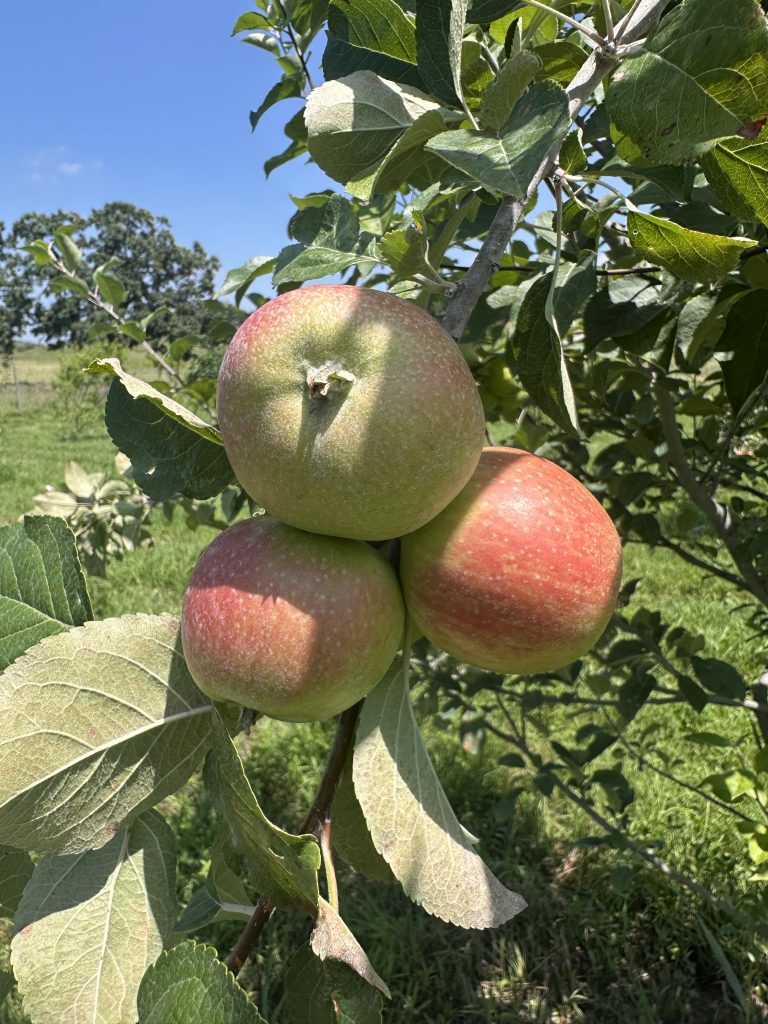
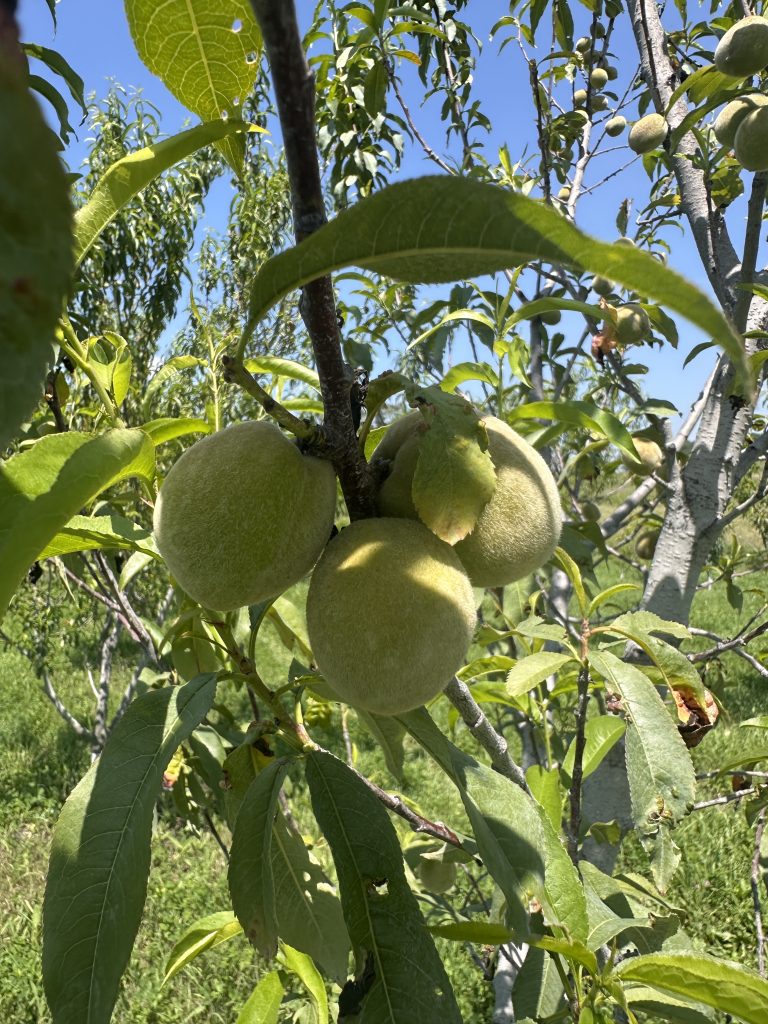
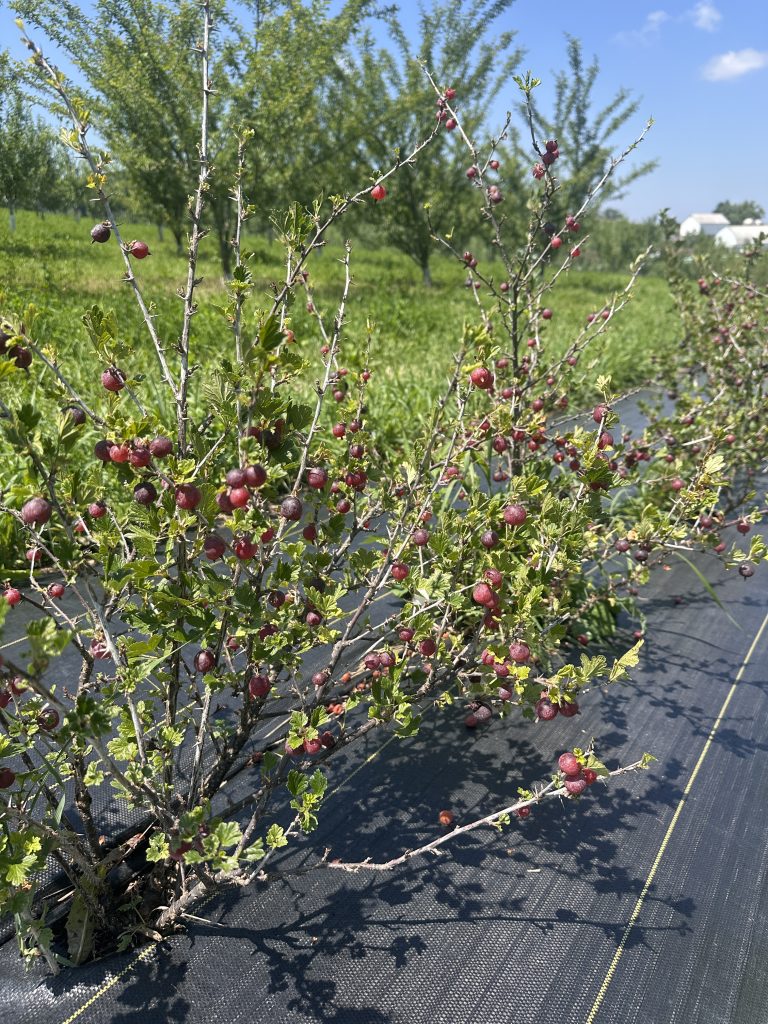
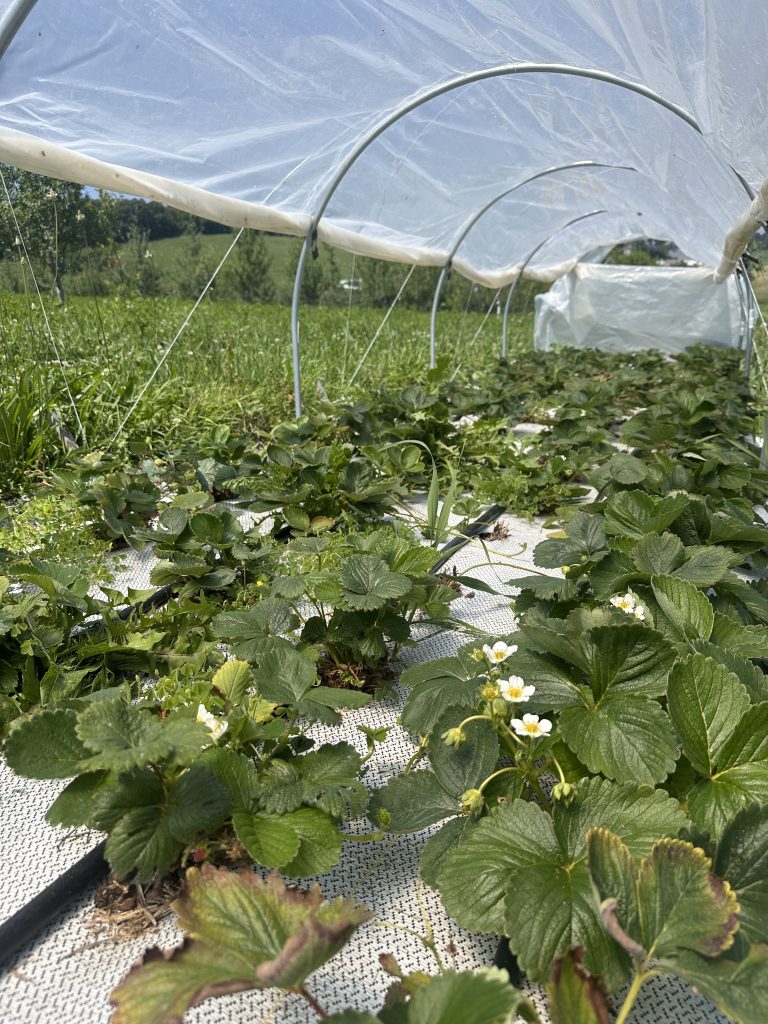
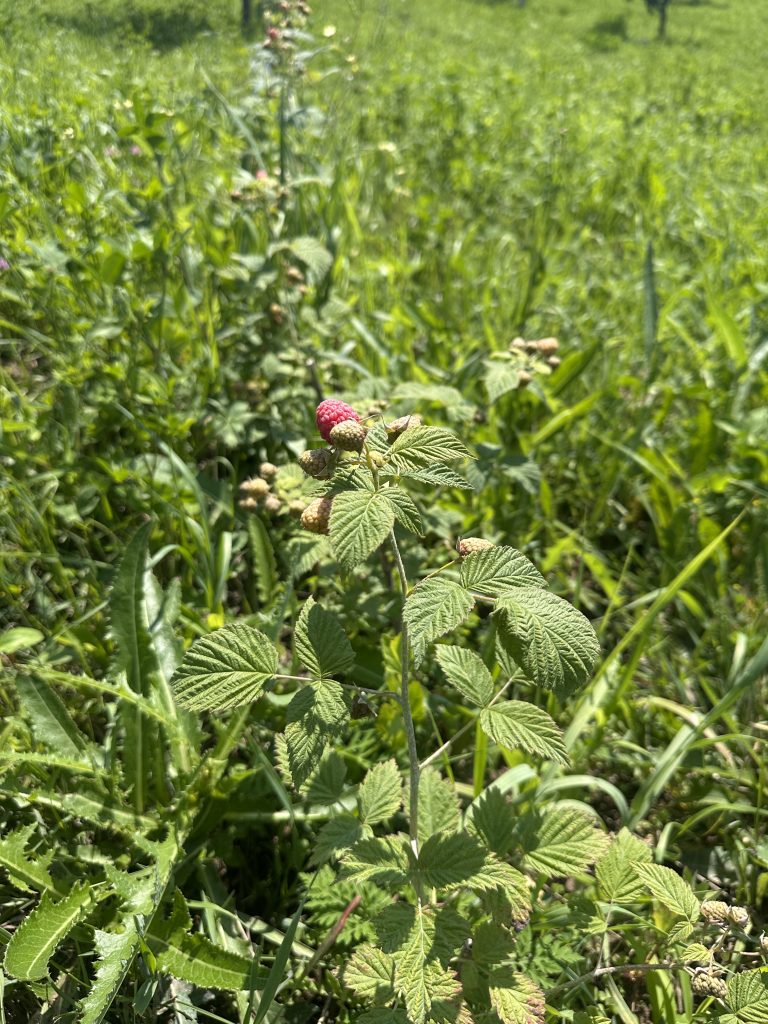
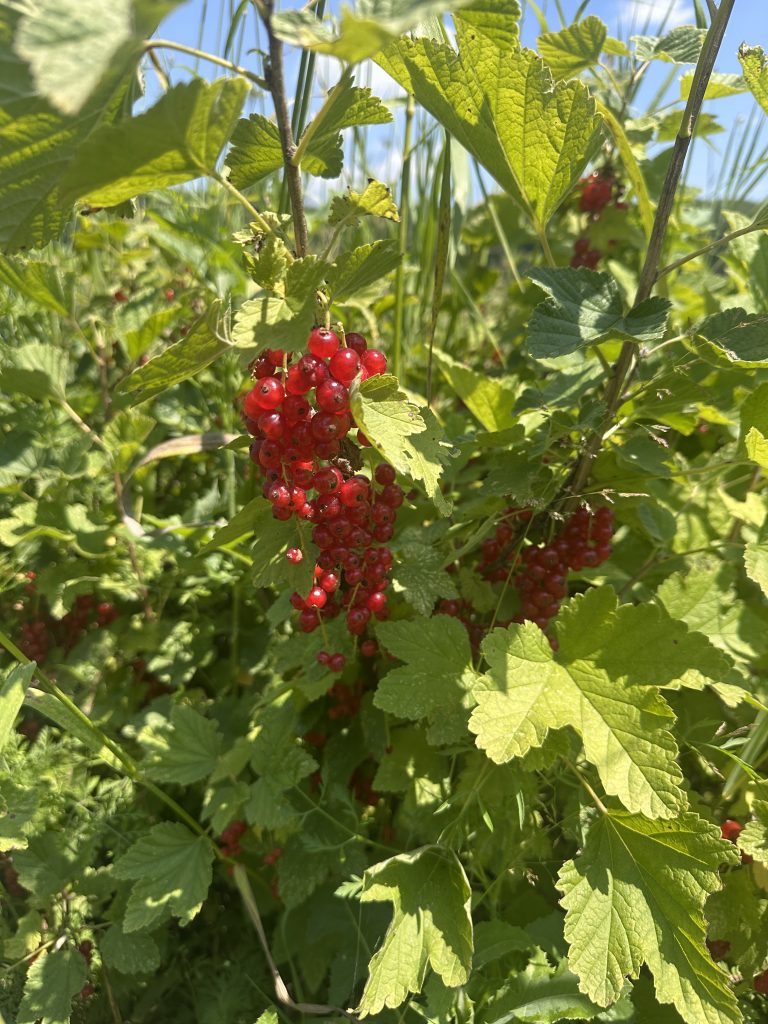
For disease management, Ben plans to continue using Potassium Bicarbonate and LifeGard WG (Bacillus mycoides isolate J) as needed for sooty blotch and flyspeck. Ben has been using Double Nickel (Bacillus amyloliquefaciens strain D747), OSO 5% (Polyoxin D Zinc Salt) and Serenade (Bacillus subtilis strain QST 713) in grapes, though has seen a bit of black rot fruit infections. Initially, black rot grape infections appear as a soft, brown spot with a lighter center on fruit (see photo below) that will continue expanding until the entire fruit is affected. Eventually, grapes impacted by black rot will shrivel up into a black/blue “fruit mummy”. Black rot has been a continually building concern for grape growers in the past several years.
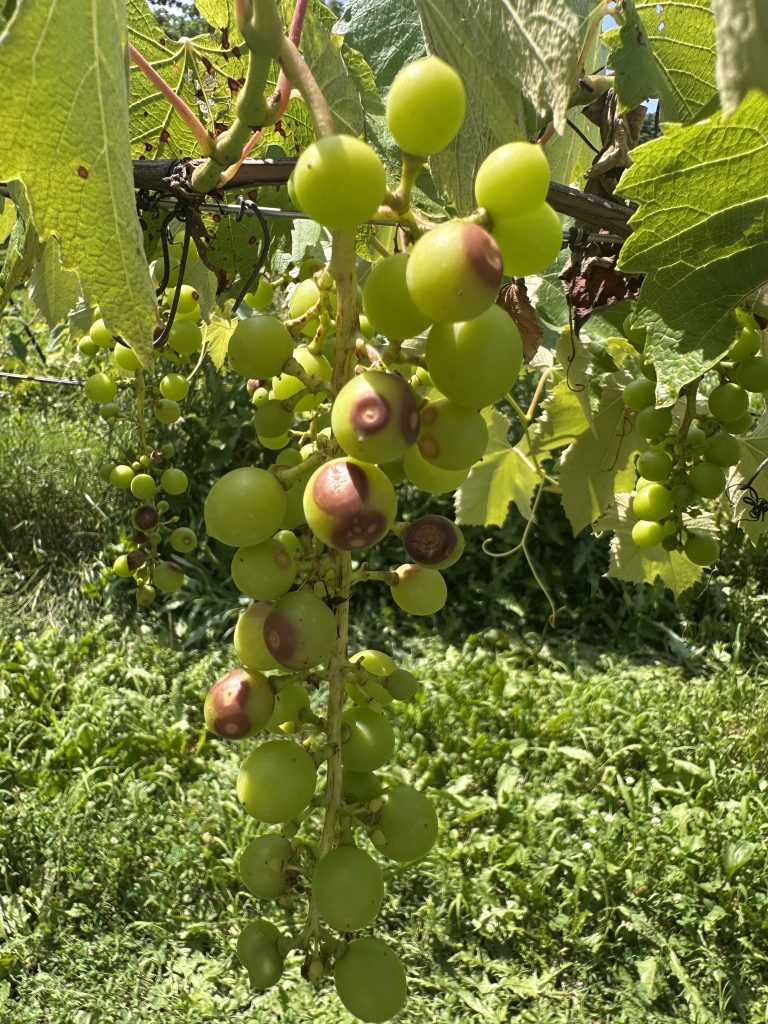
Ben has hung apple maggot monitoring traps around the perimeter of the orchard, which will help him better identify when emergence occurs, and document overall pest pressure – both important factors to keep in mind when implementing effective control measures. Ben plans on using Venerate XC (Heat-killed Burkholderia spp. strain A396) a bio-insecticide, to target any building apple maggot populations.
Japanese beetle are out in full force, and Ben plans to use insect netting on grapes and Pyganic (pyrethrins) as a spot spray for heavily infested vines and trees. Japanese beetle “skeletonize” leaves of over 350 host plants, though have a preference for grapes, crabapple, purple-leaf plum, birch, Japanese and Norway maple, rose, mountain ash, linden and basil. Adult beetles will continue to emerge through September, and females will lay eggs about 2-4” into the soil, targeting short, grassy areas (lawns, sports fields, golf courses) with high soil moisture. Developing larvae will feed on grass roots, then move deeper into the soil to overwinter. Once soil temperatures hit 50F the following spring, larvae will move up into shallower soil to continue feeding on grass roots prior to pupation, eventually emerging as adults around late-June.
Ben has captured his first flight of second generation codling moth, likely occurring on Saturday July 13 where evening conditions were warm, humid and calm. He will continue using Cyd-X (Cydia pomonella granulovirus) for any further codling moth control. A reminder that second generation codling moth will typically occur at ~1250 degree-days (base 50F) from the initial biofix. Remember to refresh your lures and continue checking traps weekly to identify second generation emergence!
Note: Several factors determine the threshold for biofix, including size and elevation within the orchard, type of pheromone lure used, and if mating disruption is used.
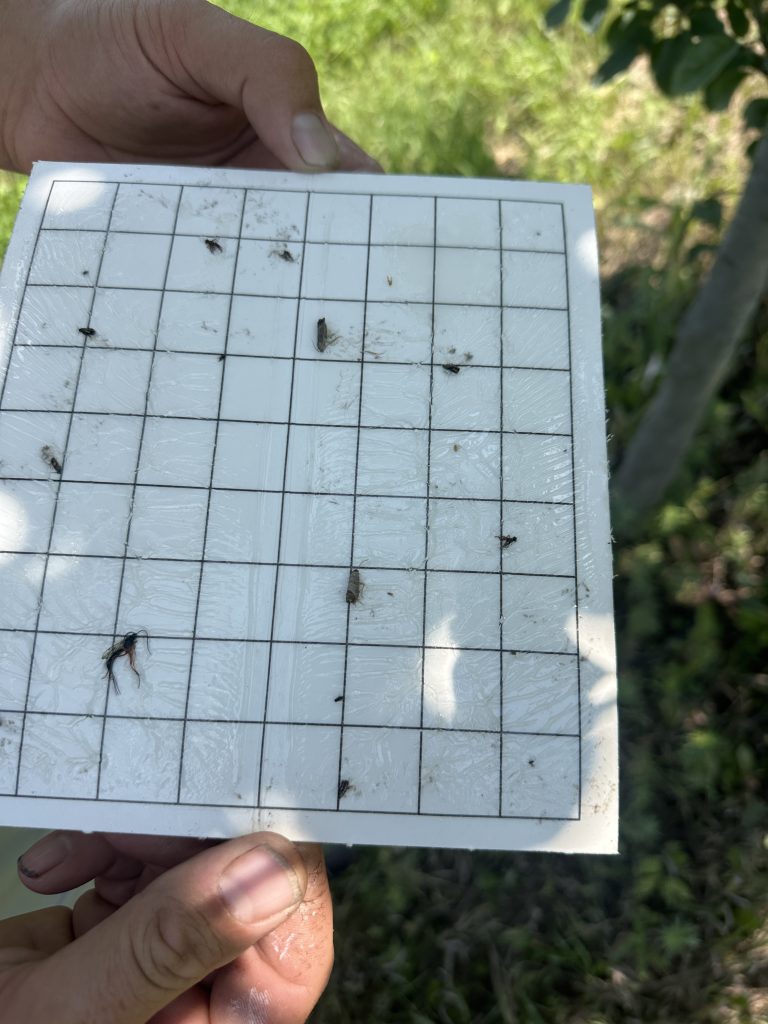
That’s all for this week’s Notes from the Field. Good luck and best wishes to all WI Fruit Growers over the next two weeks!
This article series is NOT intended to be prescriptive for other orchards. It is simply an opportunity for our readership to hear from other growers about their experiences growing fruit crops in Wisconsin.
Growing the same crop does not always justify the same practices. Management decisions at your farm should be tailored to your operation and consider location, regional climate, disease and pest history of your vineyard, and your varieties.
The mention of a product is NOT an endorsement. Always follow the instructions on product labels and consult weather stations (ex. NEWA) in your area for current weather forecast and disease and pest prediction models.
This article was posted in Notes from the Field and tagged Ben Kraus, Josie Dillon, Notes from the Field.
